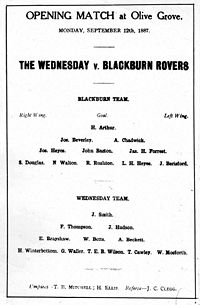
Photo from wikipedia
This paper presents control algorithms for multiple non-holonomic mobile robots moving in formation. Trajectory tracking based on linear feedback control is combined with inter-agent collision avoidance. Artificial potential functions (APF)… Click to show full abstract
This paper presents control algorithms for multiple non-holonomic mobile robots moving in formation. Trajectory tracking based on linear feedback control is combined with inter-agent collision avoidance. Artificial potential functions (APF) are used to generate a repulsive component of the control. Stability analysis is based on a Lyapunov-like function. Then the presented method is extended to include a goal exchange algorithm that makes the convergence of the formation much more rapid and, in addition, reduces the number of collision avoidance interactions. The extended method is theoretically justified using a Lyapunov-like function. The controller is discontinuous but the set of discontinuity points is of zero measure. The novelty of the proposed method lies in integration of the closed-loop control for non-holonomic mobile robots with the distributed goal assignment, which is usually regarded in the literature as part of trajectory planning problem. A Lyapunov-like function joins both trajectory tracking and goal assignment analyses. It is shown that distributed goal exchange supports stability of the closed-loop control system. Moreover, robots are equipped with a reactive collision avoidance mechanism, which often does not exist in the known algorithms. The effectiveness of the presented method is illustrated by numerical simulations carried out on the large formation of robots.
Journal Title: Applied Sciences
Year Published: 2019
Link to full text (if available)
Share on Social Media: Sign Up to like & get
recommendations!